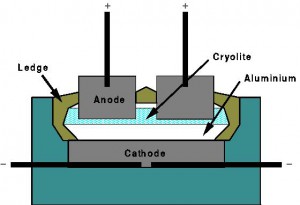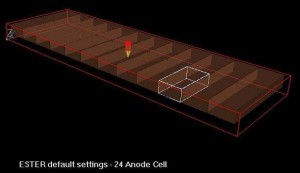PHOENICS for Electrolytic SmelTER
ESTER
For further details, please
Contact Sales
Thank you for your interest in our products and services.
if you would like to speak to a Sales Representative about ESTER, please fill out the following form:
New features to Ester User Interface
The ESTER user interface has been extensively upgraded to include:
- Cathode and collector bar configurations below metal pad
- Anode stubs, rods and bus bars above electrolyte layer
- Additional post-processing output, including:
- Interface height surface o Interface height map
- Voltage & current monitoring files
- Macros to create vectors from currents, magnetic fields and Lorentz Forces
Multi-anode electrolytic smelters simulation tool
ESTER (Electrolytic SmelTER) is a special-purpose adaptation of the general- purpose fluid flow and heat transfer code PHOENICS, developed specifically for the simulation of multi-anode electrolytic smelters of the Hall-cell type. It uses a variant of the standard PHOENICS pre- and post-processors for data input and graphical display.
Features of ESTER
ESTER enables the user fully to represent the smelter in 3-D taking into account all the major features of its design:
- any number of anodes in any arrangement
- the frozen electrolyte around the edge of the cell
- distortion of the metal-electrolyte interface due to pressure differences and due to vertical Lorentz Forces
- erosion of the anode undersides to follow the shape of the metal-electrolyte interface and
- current generation due to the motion of the metal - the induced current
- three components of metal velocity
- three components of electrolyte velocity
- the pressure
- the gas fraction under the anodes, and the inter-anode gaps; and
- the electric potential distribution.
Based on these, it deduces:
- the height of the metal-electrolyte interface, and the height of the electrolyte free surface; and
- the electric current distribution, and the induced currents. These, together with given magnetic fields, are used to compute the Lorentz forces which drive the flow.
ESTER extensions
- ESTER has further extensions, to include:
- thermal calculations, including the formation of freeze;
- calculation of aluminum oxide concentration in the electrolyte;
- interface to magnetic field calculation programs;
- interface to programs which can update the anode potentials and the cathode currents.



